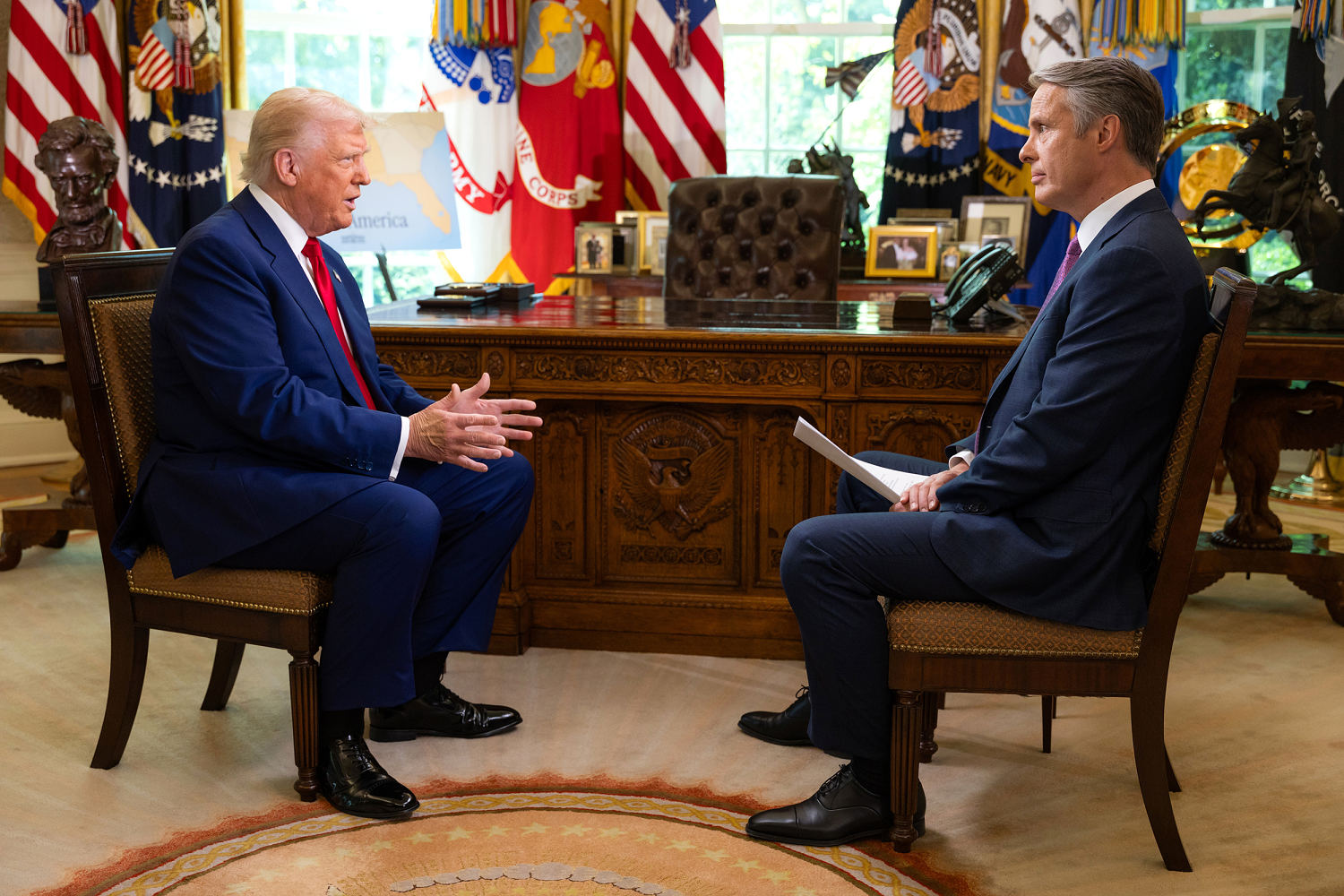
A couple of weeks ago, Donald Trump rolled out a new defense for his administration’s handling of Kilmar Abrego Garcia’s case — by promoting an image of Garcia’s hand.
The president, seemingly aware of the legal and political controversy he created by improperly sending Abrego Garcia to a Salvadoran mega-prison, apparently hoped to turn the tide with evidence showing a photograph featuring “MS13” tattooed onto Abrego Garcia’s knuckles, presumably proving his gang affiliation.
The problem, of course, was that the image was literally unbelievable: It appeared to be a crudely manipulated picture, which was further discredited by legitimate photographs of Abrego Garcia’s actual hands.
Trump and the White House continued to push the apparently doctored image anyway, leading to awkward questions about whether the president had actually fallen for the apparent sham, or whether he and his team were simply trying to pull one over on the public.
It was against this backdrop that ABC News’ Terry Moran sat down with the president in the Oval Office, and when the discussion turned to the Abrego Garcia case, Trump once again pointed to the dubious picture. It fell to Moran to explain that the photo had been manipulated, at which point the Republican said the ABC anchor wasn’t being “nice” — and the president expected Moran to simply play along.
As part of the same interview, Moran proceeded to press Trump on following the Supreme Court’s order and facilitating Abrego Garcia’s return to the United States. The president balked.
“I’m not the one making this decision,” Trump said. “We have lawyers that don’t want to do this.”
To the extent that reality has any bearing on the debate, the president leads the executive branch of the United States government. The buck stops with him. He is most definitely the one who’s ultimately responsible for, in his words, “this decision.”
The White House might very well have “lawyers” who “don’t want to” work on bringing Abrego Garcia home from El Salvador, but in this administration, they serve at the pleasure of the president. Trump tells the lawyers what to do, not the other way around.
But to hear the president tell it, he’s simply a bystander in his own White House. There are important decisions being made, but he’s not the one making them.
This comes up with greater frequency than it should.
A couple of weeks ago, for example, when talking about the Abrego Garcia case, Trump pointed to paperwork that he claimed supported the administration’s position. Sounding very much like someone who just wandered into the Oval Office, the president declared, “I’m just giving you what they handed to me, but this is supposed to be certified stuff.”
A week later, Time magazine asked Trump how much the U.S. government is paying El Salvador to imprison immigrants. “I don’t know,” the president responded. Asked if he approved the payments, the Republican added, “No, I didn’t.”
Last month, Trump was asked about four U.S. soldiers who’d gone missing during a NATO training exercise in Lithuania, and the president was clueless. Asked about the apparent assassination of a Russian general, Trump again had no idea what the reporter was talking about.
When the Republican was also asked about the Signal group chat scandal and whether he believed classified information was shared, he replied, “I don’t know. I’m not sure, you have to ask the various people involved.”
Around this time five years ago, as the severity of the pandemic came into focus, The New York Times published a memorable analysis that included a word to describe Trump that stood out for me as significant: “bystander.”
“While he presents himself as the nation’s commanding figure, Mr. Trump has essentially become a bystander as school superintendents, sports commissioners, college presidents, governors and business owners across the country take it upon themselves to shut down much of American life without clear guidance from the president,” the Times explained.
A half-decade later, it appears President Bystander has returned. Trump has taken a keen interest in playing golf, renaming the Gulf of Mexico, banning paper straws, watching an enormous amount of television, and helping steer the Kennedy Center — but on life-or-death issues, he’s offering the public a lot of shrugged shoulders and blank stares.
For a president who’s heavily invested in the idea that his immediate predecessor had no idea what was going on around him, Trump’s apparent cluelessness should be a serious problem.
This post updates our related earlier coverage.
